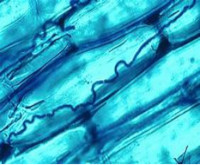Antibacterial Activity of Endophytic Bacterial Extracts Isolated from Pineapple Peel (Ananas comosus L.) http://www.doi.org/10.26538/tjnpr/v7i7.8
Main Article Content
Abstract
Endophytic bacteria are known to contain various bioactive substances. Pineapple peel (Ananas comosus L.) is a waste product utilized in environmental preservation. The present study is focused on the isolation of endophytic bacteria from pineapple peel, and the assessment of their antibacterial activity. The ethyl acetate extracts of isolated bacteria were tested for their antibacterial activity using the disc diffusion method. The components of the bacterial extract were identified by UPLC-MS/MS analysis. Extract of the endophytic bacteria (Bacillus velezensis WSM-1) had the highest activity with an inhibition zone diameter of 17.71 mm and 15.87 mm against Staphylococcus aureus and Escherichia coli, respectively. UPLC MS/MS analysis identified several compounds, including; 6-Methoxyquinoline, 2-(6-amino-9H-purin-9-yl)-5- (hydroxymethyl)oxolane-3,4-diol, Aklavin, Maltotriose, Cholestanetriol, Piperic acid, Isoflavone, Paromomycin, and Mycaloide B. Paromomycin is known to have antibacterial activity. It is a type of antibiotic that belongs to the aminoglycoside class and is commonly used to treat infections caused by gram-negative bacteria. The results of the present study suggest that the endophytic bacterial isolate from pineapple peel have potential antibacterial activity and there is a need for further study to isolate and characterize the antibacterial active constituents.
Downloads
Article Details

This work is licensed under a Creative Commons Attribution-NonCommercial-NoDerivatives 4.0 International License.
References
Anjum N, Chandra R. Endophytic bacteria: Optimizaton of isolation procedure from various medicinal plants and their preliminary characterization. Asian J Pharm Clin Res. 2015;8(4):233–8.
Mareque C, Taulé C, Beracochea M, Battistoni F. Isolation, characterization and plant growth promotion effects of putative bacterial endophytes associated with sweet sorghum (Sorghum bicolor (L) Moench). Ann Microbiol. 2015;65(2):1057–67.
Ryngajłło M. Plants as the Extended Phenotype of Endophytes — The Actual Source of Bioactive Compounds. 2023:1-25
Chaudhary V, Kumar V, Singh K, Kumar R, Kumar V, Vipul Chaudhary C. Pineapple (Ananas cosmosus) product processing: A review. ~ 4642 ~ J Pharmacogn Phytochem. 2019;8(3):4645–4645.
Rakib A, Paul A, Nazim Uddin Chy M, Sami SA, Baral SK, Majumder M, Tareq AM, Amin MN, Shahriar A, Zia Uddin M, Dutta M, Tallei TE, Emran T Bin, Simal-Gandara J. Biochemical and Computational Approach of Selected Phytocompounds from Tinospora crispa in the Management of COVID-19. Molecules. 2020;25(17):1-16
Yoo JH. Review of disinfection and sterilization - Back to the basics. Infect Chemother. 2018;50(2):101–9.
Adeleke BS, Fadiji AE, Ayilara MS, Igiehon ON, Nwachukwu BC, Babalola OO. Strategies to Enhance the Use of Endophytes as Bioinoculants in Agriculture. Horticulturae. 2022;8(6):1-24
Wekesa TB, Wekesa VW, Onguso JM, Wafula EN, Kavesu N. Isolation and Characterization of Bacillus velezensis from Lake Bogoria as a Potential Biocontrol of Fusarium solani in Phaseolus vulgaris L. Bacteria. 2022;1(4):279–93.
Clarke J, Grogan H, Fitzpatrick D, Kavanagh K. Analysis of the effect of Bacillus velezensis culture filtrate on the growth and proteome of Cladobotryum mycophilum. Fungal Biol. 2022;126(1):11–9.
Yuan H, Shi B, Wang L, Huang T, Zhou Z, Hou H, Tu H. Isolation and Characterization of Bacillus velezensis Strain P2-1 for Biocontrol of Apple Postharvest Decay Caused by Botryosphaeria dothidea. Front Microbiol. 2022;12:1-17.
Türker BL. DFT study of tautomerism in aklavinone. Turkish J Chem. 2013;37(4):547–57.
Sundar S, Agarwal D. Visceral Leishmaniasis - Optimum Treatment Options in Children. Pediatr Infect Dis J. 2018;37(5):492–4.
Franco-Duarte R, Černáková L, Kadam S, Kaushik KS, Salehi B, Bevilacqua A, Corbo MR, Antolak H, DybkaStępień K, Leszczewicz M, Tintino SR, de Souza VCA, Sharifi-Rad J, Coutinho HDM, Martins N, Rodrigues CF. Advances in chemical and biological methods to identify
microorganisms—from past to present. Microorganisms. 2019;7(5):1-32.


